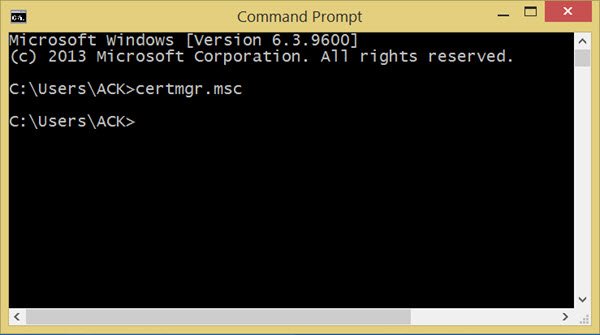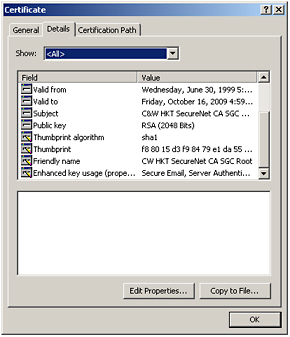

- #CERTMGR MSC COMMAND LINE INSTALL CERTIFICATE FIREFOX HOW TO#
- #CERTMGR MSC COMMAND LINE INSTALL CERTIFICATE FIREFOX DOWNLOAD#
- #CERTMGR MSC COMMAND LINE INSTALL CERTIFICATE FIREFOX WINDOWS#
Root certificate has to be installed in the trusted certificate repositories of workstations.

The last point is to generate a PFX certificate which includes a private key: openssl pkcs12 -export -out onsite.pfx -inkey onsite.key -in onsite.crt -password pass:your_password Step 4: Install the Root/Organization certificate on the server and all client machine(s) Execute the following command to do so: openssl x509 -req -in onsite.csr -days 3650 -CA rootCA.pem -CAkey rootCA.key -CAcreateserial -extensions req_ext -out onsite.crt -extfile csrconfig.txt Once we have done that, sign CSR that requires a CA root key. Then run the following command: openssl req -new -nodes -key onsite.key -config csrconfig.txt -out onsite.csr For any certificate in the list of trusted.
#CERTMGR MSC COMMAND LINE INSTALL CERTIFICATE FIREFOX WINDOWS#
Please provide DNS.0 name if needed to use the hostname or IP.0 for the IP address. These certificates can be viewed by running certmgr.msc from a command window, and updated using Windows Update. It’s needed to create csrconfig.txt a file first, below is a sample one that can use as a reference: default_md = sha512 prompt = no req_extensions = req_ext distinguished_name = req_distinguished_name commonName = 3MFileInspectorWeb countryName = CH subjectAltName = DNS.0 = your_domain_here IP.0 = 192.168.0.1 Once the key is created, it’s required to generate the certificate signing request. To create a private key (different from the root CA), run the following command: openssl genrsa -out onsite.key 4096 The important question to be answered is common-name (it will be shown as certificate name in certificate manager/store): Common Name (eg, YOUR name) : MyRootCA Step 3: Generate a concrete certificate for the website Response them how you consider appropriate. Execute the following command in the OpenSSL command line: openssl req -x509 -new -nodes -key rootCA.key -sha512 -days 3650 -out rootCA.pemĭuring generating, a certificate will be shown various questions (Country, State/Province, etc.). The next action is to generate a self-signed root certificate. Run the following command in the OpenSSL command line: openssl genrsa -out rootCA.key 4096 Step 2: Generate Root/Organization certificateįirstly private key should be generated for our root certificate.
#CERTMGR MSC COMMAND LINE INSTALL CERTIFICATE FIREFOX DOWNLOAD#
#CERTMGR MSC COMMAND LINE INSTALL CERTIFICATE FIREFOX HOW TO#
This article will show you how to generate your own authority certificates via OpenSSL for use with the website app on-premise deployment. How to generate your own / self-signed SSL certificates for use with on-premise deployments?


 0 kommentar(er)
0 kommentar(er)
